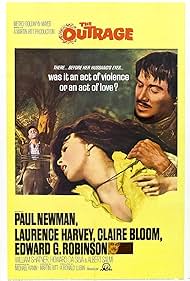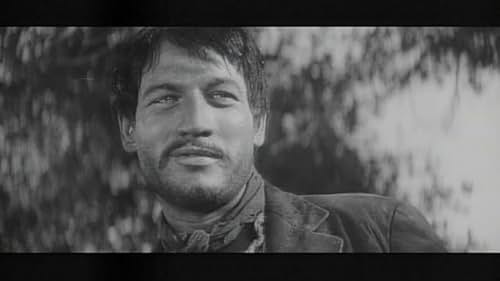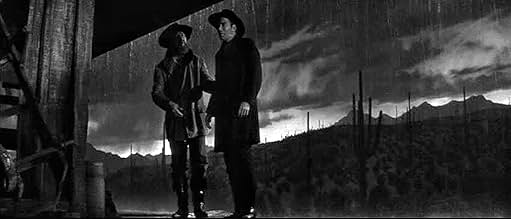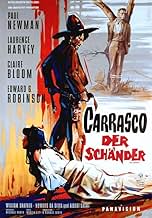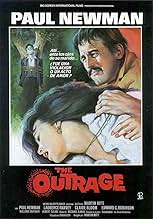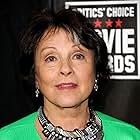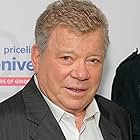IMDb RATING
6.2/10
2.6K
YOUR RATING
Travelers in the 1870s Southwest discuss a recent murder trial in which all the principals told differing stories about the events.Travelers in the 1870s Southwest discuss a recent murder trial in which all the principals told differing stories about the events.Travelers in the 1870s Southwest discuss a recent murder trial in which all the principals told differing stories about the events.
Storyline
Did you know
- TriviaPaul Newman was concerned about his accent, so he spent two weeks in Mexico with dialect coach Walon Green.
- GoofsWhen the Wife (Bloom) is fighting Juan (Newman), she falls and hits the camera rig, causing the picture to shake a little.
- Crazy creditsExcept for the title and company name, the beginning of the movie has no opening credits.
- ConnectionsFeatured in MGM 40th Anniversary (1964)
Featured review
I am familiar with Kurosawa's "Rashomon", which is original work interestingly remade in Hollywood by Martin Ritt. Those who have seen both works will be able to note the obvious virtues of the original. Yet, I saw this film with no prior knowledge of the fact that this was a remake of Rashomon.
What struck me within minutes of opening of the film was the unusual camerawork of James Hong Howe, that takes pleasure in close-ups and tilted shots that are reminescent of European cinema of the sixties. It is so far removed in style from Hollywood.
Reams of paper have used to write about Akutagawa's story immortalized by Kurosawa. So I have nothing to add on the brilliant story that obviously attracted Ritt and the playwrights Kanin.
What is unusual is Ritt's treatment. His choice of actors are interesting--Claire Bloom is a fine choice as she has a range of emotions to display with credibility; Laurence Harvey's role is limited even though he occupies a long screentime gagged and bound but he has to show scorn for a brief period the gag is removed without speaking--and when he speaks his face is not visible; Edward G Robinson is a perfect choice for a snake oil salesman and so on...
Ritt's use of the soundtrack is again non-Hollywood in style. He uses music and uses silence with great effect while characters talk to underline the emotions. Kurosawa did it to the extreme limits that makes it odd for the non-Japanese viewer.
Ritt is an interesting director. I have always admired his choice of subjects to film. I prefer his black and white films to his color projects because of the subjects that he chose to film--"Edge of the City" being one of my favorite Ritt works. The second reason I admire him is for his choice of actors, especially for the major female roles. He has derived great performances as he did here with Bloom.
This film will never be talked about because it is a remake of a classic. However, in my view it stands out as unlike John Sturges' "Magnificent Seven," which was also a remake of another Kurosawa work in Hollywood, this film adopted a different style closer to Europe and Japan. It is essentially a fine work of depicting a play on film somewhat like nuggets of celluloid gold found among the works of the American Film Theatre series.
What struck me within minutes of opening of the film was the unusual camerawork of James Hong Howe, that takes pleasure in close-ups and tilted shots that are reminescent of European cinema of the sixties. It is so far removed in style from Hollywood.
Reams of paper have used to write about Akutagawa's story immortalized by Kurosawa. So I have nothing to add on the brilliant story that obviously attracted Ritt and the playwrights Kanin.
What is unusual is Ritt's treatment. His choice of actors are interesting--Claire Bloom is a fine choice as she has a range of emotions to display with credibility; Laurence Harvey's role is limited even though he occupies a long screentime gagged and bound but he has to show scorn for a brief period the gag is removed without speaking--and when he speaks his face is not visible; Edward G Robinson is a perfect choice for a snake oil salesman and so on...
Ritt's use of the soundtrack is again non-Hollywood in style. He uses music and uses silence with great effect while characters talk to underline the emotions. Kurosawa did it to the extreme limits that makes it odd for the non-Japanese viewer.
Ritt is an interesting director. I have always admired his choice of subjects to film. I prefer his black and white films to his color projects because of the subjects that he chose to film--"Edge of the City" being one of my favorite Ritt works. The second reason I admire him is for his choice of actors, especially for the major female roles. He has derived great performances as he did here with Bloom.
This film will never be talked about because it is a remake of a classic. However, in my view it stands out as unlike John Sturges' "Magnificent Seven," which was also a remake of another Kurosawa work in Hollywood, this film adopted a different style closer to Europe and Japan. It is essentially a fine work of depicting a play on film somewhat like nuggets of celluloid gold found among the works of the American Film Theatre series.
- JuguAbraham
- May 14, 2002
- Permalink
- How long is The Outrage?Powered by Alexa
Details
Box office
- Budget
- $3,000,000 (estimated)
- Runtime1 hour 36 minutes
- Color
- Aspect ratio
- 2.39 : 1
Contribute to this page
Suggest an edit or add missing content

